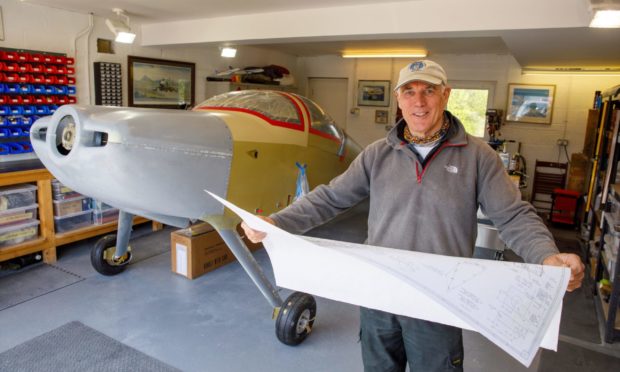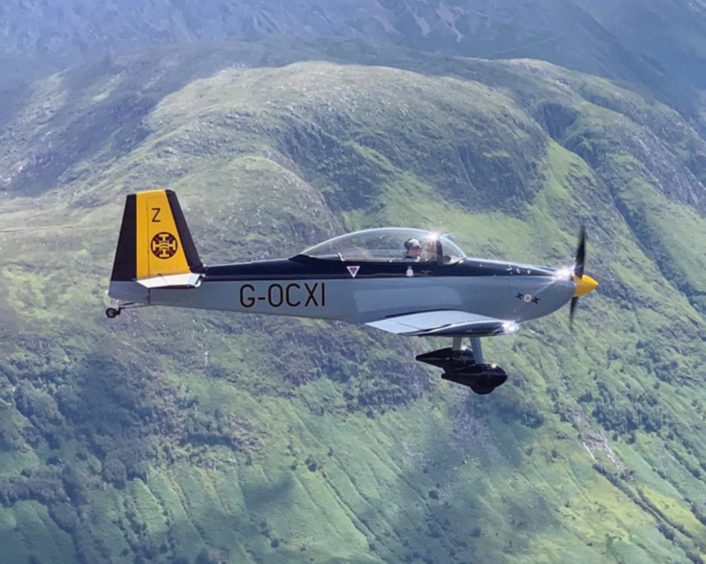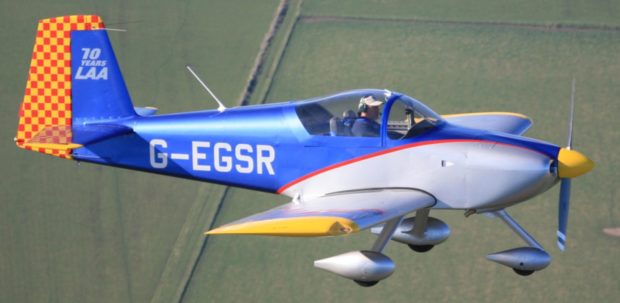A former RAF pilot has got off to a flying start with his latest venture – building his own aeroplanes.
Falklands veteran Peter Gilmour has gone from flying Phantom fighter-bombers to single-engine planes made from flat-packs in his garage.
The 67-year-old, from St Andrews, is due to finish his fifth project at the end of May following a year of work.
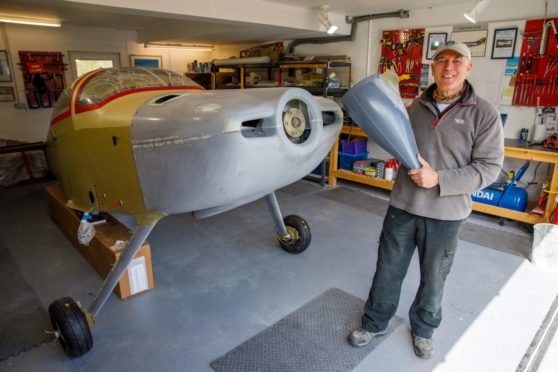
While it might seem an unusual hobby to most of us, Peter seems surprised by the attention he attracts.
“I just buy the kits from a company in America which ships them all over the world,” he said.
“This last year it’s been a godsend as a distraction from Covid.
“It only gets me five metres out the house but at least it’s out the house.”
First plane was made of wood
Peter, who also flew 220-seater Airbuses and Boeing 737s during a 25-year commercial career, built his first plane from wood at his kitchen table.
“It had a Volkswagen car engine in it,” he said.
Now he receives packs through the post that look a bit like an Ikea delivery.
“It’s just flat bits of aluminium and it’s like a big Airfix kit,” he said.
Except the difference is, this “Airfix kit” can fly at 200 miles per hour and take two grown men and their luggage to Paris on a single tank of fuel.
It had a Volkswagen car engine in it.”
Peter Gilmour.
Each kit contains around 50 sheets of complicated plans, thousands of rivets and the aluminium and fibre glass sections.
“You’re talking about 10,000 bits altogether,” said Peter. “The wings come in a separate kit.
“On average, from start to finish it takes about 18 months. This one is a year in the making.”
His brother-in-law Colin Acland is a former RAF aircraft technician and helps with the installation of avionics and electrics.
And the entire build is inspected by a professional engineer before being cleared for take-off.
Two and a quarter hours to Devon
Peter keeps one of his previous creations at the former RAF Leuchars base, where he was stationed three times with 111 Squadron.
Before Covid, he often flew to visit friends in Devon – a journey that takes just two and a quarter hours.
“They’re built to take two large Americans and 125lbs of baggage and, fully loaded, it does about 23 miles to the gallon,” he said.
“I have a friend who regularly flies to Munich in his.”
The plane he is currently building is for a another friend, who is assembling the wings separately.
“He’ll come and get it and finish it off himself,” he said.
“There’s no commercial interest in it for me – that’s not allowed. It’s a hobby.”
Always wanted to fly
For as long as he can remember, Peter has always wanted to fly.
“I don’t know why,” he said. “I’ve no family connections with flying particularly.”
He joined the air force in 1971 and spent 20 years primarily flying Phantoms.
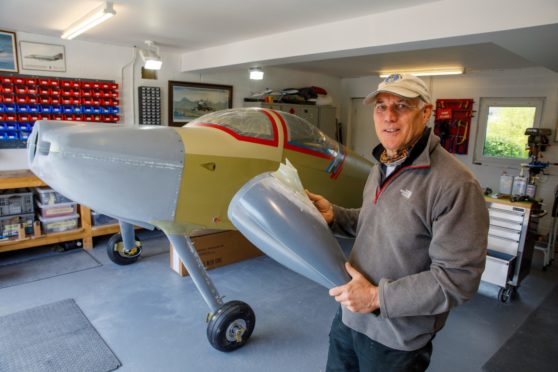
He was based at Leuchars for eight years but also had spells at RAF Coningsby in Lincoln, Germany and the Falkland Islands, where he was head of the Phantom detachment.
During the Falklands War he was based on Ascension Island in the South Atlantic.
But he went from supersonic jets to holiday flights when he left the air force in 1991.
His was the calm voice you’d hear over the speakers before take-off, telling you how high you’d be flying and when you’d arrive.
He started with Loganair but migrated to Air 2,000, which later became First Choice and then Thomson Tui.
And he ended up as chief pilot with Thomson Airways.
“It’s an industry that changed a lot in the 25 years I was in it,” he said.
“Now, I just prefer touring in my two-seater and building my kits.”
